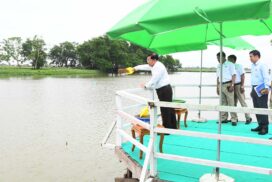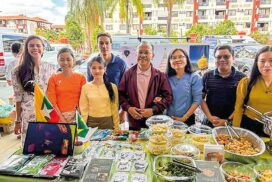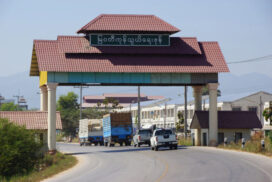Rice and paddy play a significant role in Myanmar, not only for food production but also for cultural purposes. Paddy, the crucial crop of the agricultural sector, occupies 34 per cent of the total sown acreage for all crops.
Myanmar holds the fifth position among the top 10 countries in paddy production. The leading rice-exporting countries are India, Thailand, Viet Nam, Pakistan, Myanmar, the US, China, Cambodia, Brazil, and Uruguay, according to RepotLinker, a global consultancy for countries and companies.
Paddy cultivation stands at the forefront among various crops in Myanmar. The paddy yield is sufficient to feed the entire population, with a surplus being exported abroad. Myanmar earns approximately US$80 million per month from rice exports. Currently, Myanmar exports rice and broken rice to about 30 countries. According to RepotLinker, the number of rice consumers worldwide is increasing, and the value of the global rice market is projected to reach US$271.04 billion by 2028.
Myanmar produces around 14 million tonnes of rice annually, of which approximately 11 million tonnes are consumed domestically. About 2.2 million tonnes of rice and broken rice are exported each year. The majority, 80 per cent, of rice production is utilized for daily consumption and snack production within the country, while the remaining 20 per cent is exported.
However, rice prices in the domestic market are soaring due to certain businessmen hoarding rice and selling it at inflated prices. The spike in rice prices poses a significant challenge for lower-income groups and those at the lower strata of society, despite widespread criticism of the situation.
The instability of the rice market is more severe in Myanmar compared to neighbouring countries. The fluctuation of the US dollar has a direct impact on the high prices of agricultural inputs, fuel, and other commodities. Additionally, the lack of peace and stability in some paddy-growing regions affects the overall paddy production process.
To ensure local food sufficiency and maintain export capabilities, farmers in Myanmar must take advantage of favourable weather conditions, minimize losses and waste, adapt to market conditions, and utilize fertile soil. By increasing the volume of rice and broken rice exports to earn foreign exchange, the country can allocate its budget to relevant sectors and focus on modernization. As such, now is the time for farmers to expedite efforts in growing paddy and other crops with the assistance of local authorities for local consumption as well as earning incomes in the export of rice to customer countries.
Build a motherland with food sufficiency of rice
- July 16, 2023
- 975













